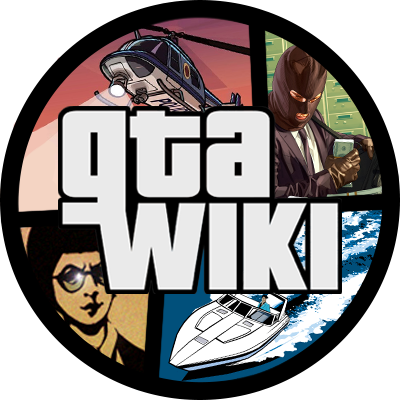Drifting is a driving technique that enables sharper steering in a vehicle. In exchange for greater tire friction and lower cornering speed, drifting improves the rate at which a car can steer in any direction. On tarmac, drifting is normally a slower cornering method than traditional methods used by professional drivers. In rally racing, however, drifting is an essential technique for many corners (due to rough terrain, which can often hinder traditional braking methods used on tarmac). Drifting has been available to players since Grand Theft Auto III. But, prior to the release of Grand Theft Auto: San Andreas, drifting was overly difficult, and served no useful purpose.
The differences between drifting around corners and driving around corners are best described visually (watch professionals to better understand these differences). When a vehicle drives around a left turn, for example, the driver is steering left. When a vehicle drifts around a left turn, ideally, the driver is steering right. While a vehicle is drifting, it travels around a corner on an angle. The vehicle has lost rear traction and is spinning around, but the driver is preventing the car from spinning around completely. A driver controls this loss of traction through many rigorous throttle and steering corrections, and is "controlling" a vehicle that is trying to spin around. The driver is "spinning out" around a corner, but is controlling the vehicle.
GTA: San Andreas
In Grand Theft Auto: San Andreas, vehicular handling physics had greatly improved. These new physics boasted a few surprising "realistic" features while drifting vehicles. Handbrake deceleration and travel, maximum steering angle during a drift, weight transfer, oversteer, momentum, and braking effects (often resulting in sharper weight distribution than handbraking). Unfortunately, vehicles decelerated unrealistically when traveling in reverse. This made performing J-turns or 360 turns impossible without nitrous or speed, or a slope.
The sharp deceleration in reverse hindered the player's ability to perform doughnuts. Even the quickest rear-wheel drive cars would regain traction when spinning around, unless nitrous were engaged. Nitrous was a limited, purchasable performance upgrade for most vehicles in San Andreas. With nitrous engaged, a vehicle accelerated more quickly, and decelerated more slowly. Nitrous improved the performance of cars to a great extent, allowing them to drift with much bigger angle at lower speeds. Utilizing nitrous, a player could perform much longer and faster drifts than otherwise possible.
Many GTA: San Andreas fans have developed original handling physics for different cars in the game. These original "handling lines" allow for ease of initiating drifts and prolonging drifts. This is partly achieved by grossly increasing vehicle acceleration, to counter the default physics' low-speed shortcomings. Modding GTA games to allow ease of drifting has become a popular practice, and is likely to stick around.
GTA IV
The handling physics in GTA IV appeared to strive to emulate reality very closely. In the process, however, drifting in a coherent or normal way was rendered impossible. Assisted J-turns and 360 turns could be performed with ease, but vehicles felt large and clunky, and were unkind to those who dared to pull the handbrake. In some cases, drifting could be poorly mimicked through various actions, such as tire-popping, or overly careful application of the handbrake. To overcome this problem, players have developed original handling physics for various vehicles in the game. Drifting in GTA IV is almost exclusively performed through the use of handling lines.
